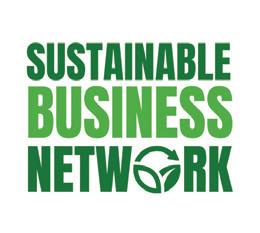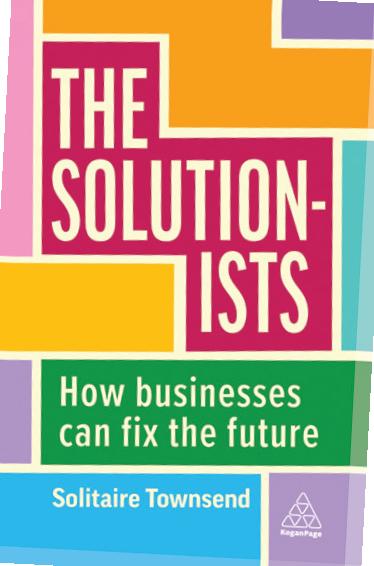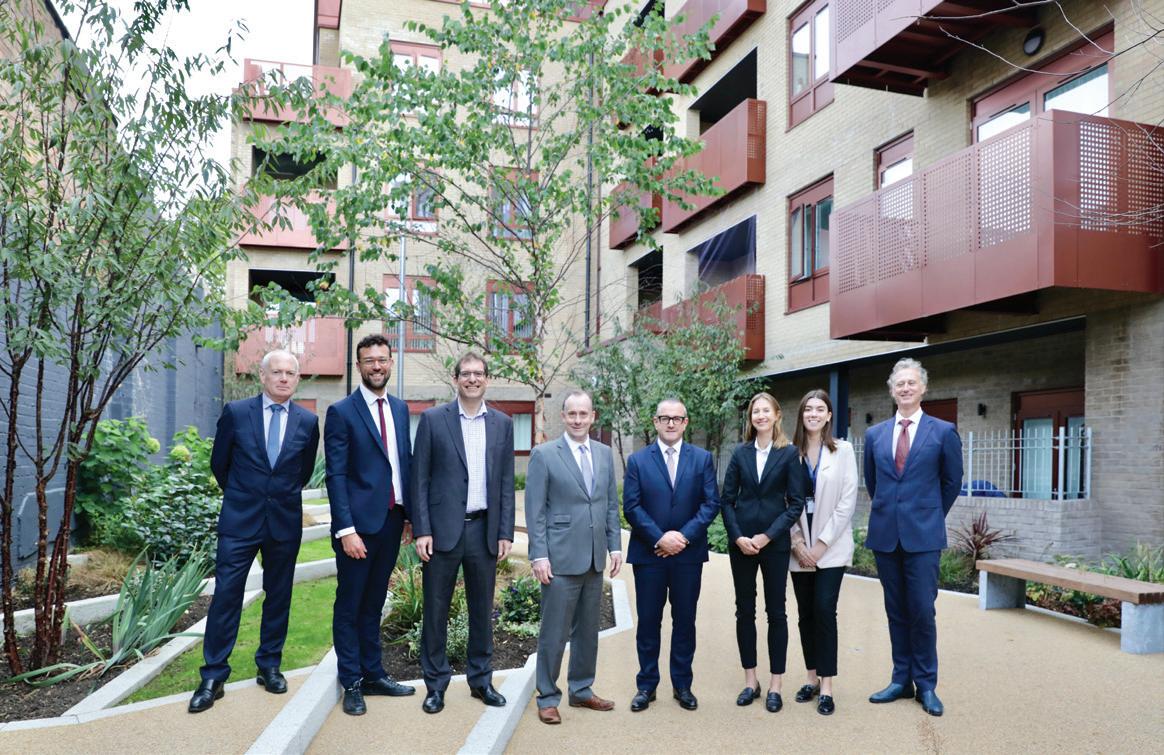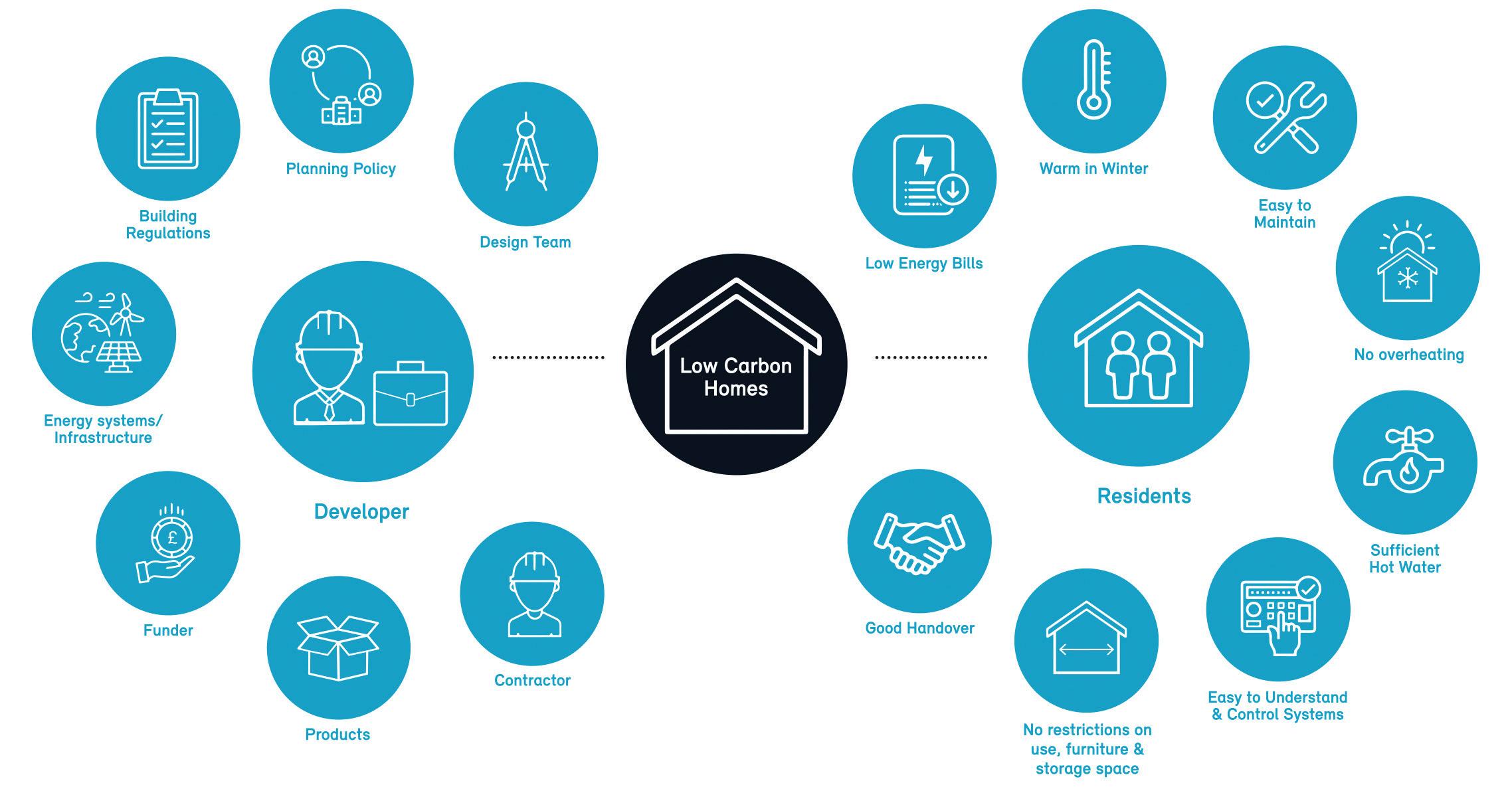



We have an in-house Our courses are Our courses work IOSH, IEMA, RoSPA, IATP team of IEMA & 100% online & can be on PCs, tablets & & CPD approved/ assured IOSH-approved tutors started immediately smartphones courses 100% online









We have an in-house Our courses are Our courses work IOSH, IEMA, RoSPA, IATP team of IEMA & 100% online & can be on PCs, tablets & & CPD approved/ assured IOSH-approved tutors started immediately smartphones courses 100% online




Our customer support You get a free We're rated 4.8 / 5 Approved Approved team are available 7 dashboard to monitor on reviews.co.uk & as training training days a week course completions 'outstanding' by IOSH centre provider 980

12 Interview: Dr Wei Yang
The renowned urban designer and town planner discusses her passion for creating sustainable and inclusive 'garden cities'
15 Circular economy
Could making waste into biochar help promote a circular economy?
Alison Margaret Brown investigates

16 Green infrastructure
Huw Morris reports on how developers are building with nature to transform housing, protect habitats and species, and reverse the climate change trajectory

19 Pollution
Cancer-causing PFAS can be found in the blood of humans and animals, so what's being done to eliminate forever chemicals?
24 Q&A: Solitaire Townsend
Futerra's 'chief solutionist' tells Chris Seekings how she stays positive in the midst of environmental pessimism
26 Net zero
David Burrows outlines some key themes to keep us on track to net zero
28 Happiness

Richard Lupo on how maximising human wellbeing can help combat the stress of climate change
30 Construction
Ian Yenney reports on a research project giving valuable insights into building low-carbon homes
33 Opinion

Kye Gbangbola explains the importance of demonstrating your sustainability credentials


ello, and welcome to another edition of Transform magazine. I hope you have had a good and productive couple of months.
I'm delighted to say that the IEMA family is now 20,000 strong! Thank you so much for choosing us for your professional journey, We don't take it for granted, and it's a privilege to support you.
Sustainability and environment professionals know from their daily experience that there is no one solution to the question of how to get to net zero or true sustainability - would that it were so easy! However, buildings and infrastructure are two sectors where there could - and should - be many easy potential gains. In this edition, we consider two aspects of this fascinating topic, Ian Yenney MIEMA reports on the Building for 2050 research project and offers unique insights into low-carbon homes, and Huw Morris investigates the gains to be had from green infrastructure in urban landscapes.
Per-and polyfluoroalkyl substances (PFAS) - not easy to say, and even harder to remove from pretty much every ecosystem on Earth, despite significant concerns about their effects on human health and biodiversity, If you live in the US or Scandinavia, you may well have heard of them - if not, read Chris Seekings' report on these 'forever' chemicals, and you will be Googling 'PFAS-free cookware' soon afterwards, like I was.
Chris also had the chance to speak with worldrenowned urban designer and town planner Dr Wei Yang, She has some fascinating thoughts about 'garden cities', what we want from urban design post-Covid, and how we need to rethink urban spaces that are often designed for fit, healthy men in order to support everyone in a community.
That's it from me - as always, we really welcome your comments, feedback and thoughts for articles. Please do get in touch and thanks so much, as ever, for being the inspiration for everything that we do.
IEMA is the professional body for everyone working in environment and sustainability. We provide resources and tools, research and knowledge sharing along with high quality formal training and qualifications to meet the real-world needs of our members. We believe that together we're positively changing attitudes to sustainability as a progressive force for good.
!EMA
Fenland House, 15 B Hostmoor Avenue
March, Cambridgeshire PE15 0AX tel +44 (0) 1522 540069 info@iema.net I wwwiema.net
Editor Sharon Maguire s.maguire@iema.net
Deputy editor Chris Seekings c.seekings@iema.net
Sub-editor
Caroline Taylor

Group managing editor
Sian Campbell
Group art director
Jes Stanfield
Commercial director


Michael Coulsey 020 3771 7232 michael.coulsey@thinkpublishing.co.uk
Production director
Justin Masters
Client engagement director
Melissa Michael
Executive director
John Innes
Printer Zenith Print and Packaging Ltd
MIX /J, Paper from FSC responslbtesources Jlc.atg FSC• C019670

Published by Think 20 Mortimer Street, London, W1T 3JW www.thinkpublishing.co.uk 020 3771 7200
© IEMA 2023
This magazine aims to include a broad range of opinion and articles that do not necessarily reflect the views of IEMA; nor should such opinions be relied upon as statements of fact
The income generated from advertising included in Transform goes towards the production and distribution costs of the magazine, leaving more of your membership fee to help us in our mission to transform the world to sustainability.
All rights reserved. No part of this publication may be reproduced, transmitted in any form or by any means, electronic, mechanical or otherwise, without the prior written consent of the publisher and editor.
ISSN14727625
The paper used to print Transform comes from sustainable sources.
"Sustainability and environment professionals know from their daily experience that there is no one solution to the question of how to get to net zero or true sustainability"
IEMA is delighted to announce that our membership has grown to more than 20,000 professionals working in environment and sustainability roles. This is a 30% growth since 2020, making IEMA one of the largest membership organisations within the sector.
Our growth reinforces the value that our members place on a professional membership and the benefits that we offer, as they are at the centre of the sustainability agenda, connecting businesses and individuals across industries, sectors and borders.
IEMA supports its members on every step of their journey, from undergraduate to retirement, with access to continuing professional development, relevant news and content, best practice and up-to-date policy positions and influence. We train organisations and individuals to make the most environmentally sound choices in their work, and support public and private sector organisations, governments and regulators to do the right thing when deciding on environmental and sustainability related initiatives, challenges and opportunities.
IEMA CEO Sarah Mukherjee MBE said: Tm thrilled to see just how many people value IEMA membership. When I talk to our members and hear about the work they're doing, I know that we're heading in the right direction for a more sustainable future, but we must do more. Equipping our members with cutting-edge tools and knowledge is essential to tackle climate change."
The protection and restoration of the natural environment are challenges that have entered the mainstream. Awareness of the need to act urgently on the climate and wider environmental emergencies is growing among the public, in business and in government. Coupled with this is a shift towards a fuller understanding of sustainability that incorporates the need to consider the social implications of growth alongside the environmental and financial ones.
To ensure that IEMA can continue to play a lead role in the journey towards a more sustainable economy and allocate its resources to best effect, the Institute's Board has commissioned a review of its purpose and identity.
In February, IEMA's Impact Assessment Network published Volume 15 of the Outlook Journal, covering public participation, stakeholder engagement and impact assessment (bit.ly/3Z7qnpv).
Public participation is fundamental to environmental impact assessment (EIA). However, compliance with the basic legislative requirements for consultation is not enough. To be effective, engagement must be carefully planned, tailored to each proposal and IA process, and follow some well-established principles.
The current review of the environmental assessment regimes in England and Northern Ireland, and the potential introduction of Environmental Outcome Reports, gives an opportunity for reflection on the state of practice.
This volume sets out some of these principles, from the 'why we engage' question to the how and with whom, and what makes for better good practice engagement on the ground, including use of a wide range of techniques to meet various engagement objectives.
In this edition, guest editor Tanya Burdett draws together eight articles by authors with rich experience in various sectors, including EIA, SEAand many other areas of practice. It provides insights into new and interesting approaches, specific techniques and the current state of engagement practice in the UK and further afield.
Public participation and stakeholder engagement in impact assessment is more important now than ever before as we seek to tackle the climate and nature emergency amid global social and economic upheaval.
During February and March, a series of workshops took place with IEMA members around the world to seek their views on how the Institute should move forward. These sessions will be followed up with a member-wide survey in April. The insights and recommendations that come out of this research will be presented to the IEMA Board later in the year, at which point decisions will be taken on next steps. Specifically, the review is examining:
1Purpose Exploring with members and other expert stakeholders what they believe to be the future of the profession and IEMA within the context of the mainstreaming agenda on sustainability. This includes questions on whether IEMA remains a professional body or expands its remit to be a membership home for other individuals and organisations with an interest in environment and sustainability.
2 Identity We are exploring whether IEMA's name, tagline and other identity elements are fit for purpose over the long-term, based on the insights that we gather on the Institute's future purpose. As a not-for-profit membership organisation, IEMA seeks to invest its revenues into creating greater value for our members, so it's only right to consult on what the future purpose and mission of the organisation should be.
If you would like to know more about the review, please contact info@iema.net
A new long-term environmental targets framework for England was published in 2022. The framework will support the delivery of a range of government priorities, including the Resources and Waste Strategy, which commit to doubling resource productivity by 2030.
Economic growth is intrinsically linked to greater resource use and greenhouse gas emissions. The way we currently use and dispose of materials and products is not sustainable. To meet our environmental targets, we must take a new approach to resource productivity that decouples economic growth from GDP. Doing so offers an opportunity to help the transition to a circular economy.
After consultation with members through webinars and workshops, IEMA has published a policy recommendations paper. For the government to create a robust resource productivity target, the paper recommends the following:
• The evaluation of resources should focus on the entire and extended lifecycle of products, from resource extraction to end-of-life treatment.
• Focusing efforts on decoupling resource use from GDP. This should be based on consumption and not solely on production.
• The target should be underpinned with 'principles of green growth' to enable the transition to a low-carbon circular economy through the use of sustainable materials to increase resource efficiency.
• Exploring alternative indicators that cover Pigouvian tax, Environmentally Adjusted Multifactor Productivity Coefficient, and an Index of Product Resource Efficiency to improve resource security and risk for key materials or sectors.
Detra published the Environmental Improvement Plan in January 2023. In this is a commitment to produce a new 'maximising resources and minimising waste programme in England'.
A programme focused on resource efficiency is a positive step. However, a plan that only covers England will not unlock all the opportunities needed for a more circular and sustainable future.
The practicalities of how the programme will complement a new resource productivity target and interact with policies and initiatives in other jurisdictions are important considerations for the government going forward.
The UK's Transition Plan Taskforce (TPT) was launched in 2022 to develop a 'gold standard' for private sector climate transition plans, and it has moved at speed to deliver on this. The Disclosure Framework and Implementation Guidance have already been written and put out for consultation.

IEMA participated in the consultation, holding a workshop to listen to members' views. Members suggested that transition plans should include mapping organisational green skills, and a strategy to address any gaps.
The Disclosure Framework either matches or goes further than the existing Task Force on Climate-related Financial Disclosures requirements and the soon-to-be-launched International Sustainability Standards Board obligations, and the guidance is clear and easy to follow. The TPT is also accommodating on lead times, acknowledging the complexities facing businesses in preparing plans.
The TPT has declared a goal to support better-informed decisions about how to
allocate capital, in turn supporting the UK's transition to net zero. Success in this will largely depend on two things.
First, climate crises notwithstanding, business allocates capital based on a judgement on risk and return. If the risk of not supporting the transition to net zero has an attractive enough price, business will take that risk. It is ultimately up to regulators to create an environment in which the risk is too high at any price.
Second, transition plan-based financial decisions will be based on promises on long-term forward plans. These will only be better informed if the governance stage of monitoring, auditing and reporting is robust and trustworthy. Otherwise, the transition plan will be worthless at best and at worst a potentially illegal misrepresentation of the company's position to investors.
The financial sector appears to be fully behind the transition planning requirements, and boards seem ready to listen to their recommendations. While transition plans can provide a detailed map of the way forward, we will need the regulators to provide the compass.
28-29 June 2023, Frankfurt Messe, Germany

A two-day event for recycling and recovering critical raw materials from various consumer and industrial waste streams. Frankfurt has been the host city since 2021, and the facilities and travel connections make the venue a popular destination among exhibitors, visitors and conference participants. The conference and both exhibitions will cover waste innovation in the recycling sector.
• Register now at batteryrecycling-expo.com/register-to-attend for a free expo passor early bird conference ticket

t was another busy year for IEMA in 2022, with significant achievements in our policy and advocacy work and promotion of the profession.
A core focus has been green jobs and skills, building on our prior-year evidence session to the House of Commons Select Committee inquiry. We partnered with Deloitte to develop and publish insight and research on mainstreaming green skills across the economy, as well as developing a toolkit for organisations to be able to evaluate the workforce transformation needed in order to thrive in a green and sustainable economy. Our 'all jobs greener' work underpinned our participation at COP27 in Egypt, with sessions in both the international 'blue' and national 'green' zones on green jobs, skills and careers.

19,601 individual members, an increase of 8%since the end of 2021
71 new IEMA corporate partners and 307 in total
It was an opportunity to highlight the role of the sustainability profession in driving positive climate action, as well as raising our profile on a global stage. This is also reflected through our participation in the government's Green Jobs Delivery Group, working with ministers and officials across four departments to support the creation of 480,000 green jobs by 2030.
Implementation of the Environment Act 2021 was a crucial opportunity to help ensure the effectiveness of the new environmental governance framework. Our work with members, overseen by our new Policy and Practice Committee, informed our input on legally binding environmental targets and principles.
Early in 2022, we published updated Environmental Investigation Agency guidance on assessing the significance of greenhouse gas emissions associated with new developments. Our methodology has been widely adopted and used as the reference point as an input to decision-making.
Providing continuing development opportunities and setting standards for professionals remained at the core of IEMA's delivery in 2022, with our member conference, IEMA Connect, a highly attended webinar series, and an engaging events programme hosted by our regional networks. In forthcoming issues, we will take a closer look at the impacts of this work.
7,000 people trained through bookings for the IEMA'scertified 65 events hosted by IEMA's training courses regional networks .. ,
4,704
8,249 - registrations for 34 IEMA webinars universities with IEMA accredited courses

was quoted more than
500 times in online press and social media

2,991,971 pageviews on iema.net


ublic awareness of the climate and biodiversity crises reached a crescendo in 2018, with Fridays for Future, Extinction Rebellion and BBC documentaries by Sir David Attenborough driving demand for action from governments and corporations.
One of the most popular solutions which organisations of all shapes and sizes have chosen to pursue is net-zero greenhouse gas emissions, otherwise known as 'net zero'.

This push towards net zero as a tool for change was in part driven by the Intergovernmental Panel on Climate Change's 2018 report on 1.5°C of global warming stating decadal deadlines for the levels of emissions reductions required to keep global temperatures within a range that is safe for human civilisation.
Since net zero became popular across the political divide in the UK and in many FTSE 100 and 250 corporations, it has attracted praise and criticism. It is liked for its simplicity on the surface -signalling a clear intent to reach overall zero emissions at some point in the future, without dramatically changing the operations of the organisation or state.
This simplicity hides huge complexity -for instance, around baseline years, voluntary action versus statutory requirements, the inclusion of scope 1, 2 and/or 3 emissions, and the range of other actions needed to deliver a habitable planet. There is also no blueprint for action that is shared across the board, despite the best efforts of many within our sector.

The fact that net zero can be viewed in this highly simplistic way allows organisations to purchase vast volumes of carbon offsets and claim to be carbon neutral, despite actively emitting greenhouse gas emissions and making no attempt to decarbonise their actual operations.
In January, The Guardian newspaper published the results of an investigation which found that more than 90% of rainforest carbon offsets from the biggest certifier were 'worthless' and may actually worsen the climate emergency.
When the UK government put its net-zero commitment into law, it set a deadline of 2050. This is in line with the science, but falls short when you consider the international
climate leadership position the UK claims to hold. It also fails to take into account our historic contribution to the climate crisis and our responsibility for cleaning up the mess we have made.
The 2050 deadline has been viewed by many private companies as the minimum viable deadline to set their own emissions, with some setting separate deadlines for their scope 1, 2 or 3 emissions. It means that a company can claim to be leading the way on climate action because it may be the only one in its sector to have committed to net zero at all, and may only need to start decarbonising decades down the line.
Net zero has been grasped as a catch-all term to indicate environmental responsibility. The crisis we are in is not limited to the concentration of carbon dioxide in the atmosphere and resultant warming. We are experiencing the sixth mass extinction event and net-zero commitments will potentially do nothing to protect the
genetic diversity which we rely on for food and other ecosystem services.
Some companies take this into account and make sure that the living communities they touch are enabled to thrive. New rules from Defra mean that many developers will need to prove they are having a net positive impact on nature, under its biodiversity net gain framework.
Net zero also fails to guarantee action on climate justice. It allows organisations to think that we all have the same responsibility, whereas those in the Anglosphere and Western world should be doing more than our peers in the majority world. Doing more means spending more money and time and taking more risks, otherwise we will further entrench the colonial, capitalist mindset that landed us in the climate emergency in the first place.
TOM PASH BY, Al EMA, is a digital journalist at I EMA
"Aninvestigation [has] found that more than 90% of rainforest carbon offsets from the biggest certifier were 'worthless' and may actually worsen the climate emergency"
mall and medium-sized enterprises (SMEs) account for 61%of total employment in the UK and a little over half of the turnover in the private sector, according to Federation of Small Businesses (FSB) figures from 2021. 1 With businesses being a major driving force in decarbonisation efforts, it is surprising, given these statistics, that SMEs are so often overlooked.
However, is it really? Unlike larger businesses and institutions, SMEs cannot afford to have an in -house sustainability team or put money towards hiring an environmental management company to help them better understand and manage their carbon emissions and other sustainability concerns. Throw in a global energy crisis, and the already more limited financial resources available to SMEs are even further stretched.
In addition to costs, it is important to consider the effect of scope 3 emissions. Regardless of a company's size, scope 3 emissions are its largest emission source, accounting for more than 70% of its carbon footprint. 2 When it comes to SMEs, this is even more significant as their scope 1 and 2 emissions are almost negligible in comparison with their larger counterparts.
Our efforts to decarbonise the economy, which up until now have largely focused on scope 1 and 2 emissions, have resulted in SMEs being left behind. Understandably, these emissions were addressed first given that the ownership or control largely lies with the businesses themselves, and the strategies employed to address these emissions are more clearcut (compared with addressing scope 3 emissions).

On the flip side, with no direct ownership, control or obvious solutions for scope 3 emissions, it's easy to see
An example of an approach to support SMEs to decarbonise used by the Guildford Sustainable Business Network -a joint venture between the University of Surrey and Zero Carbon Guildford


Inform, support Self-sufficiency Financing Knowledge and encourage Self-sufficiency Up to £20,000 exchange Events, workshops, in developing match-funding for Knowledge Transfer collaborative local a carbon a wide range Partnership effort, plus management of sustainability AKT connections to plan. Training on initiatives Innovation vouchers service providers the Net Zero 360 SETsquared and solutions carbon tool Postgrad placements
why they have yet to be addressed to the same extent as scope 1 and 2.
However, we can no longer afford to avoid the messiness that comes with addressing scope 3 emissions. Furthermore, in doing so, we cannot make the same mistake of overlooking SMEs as we have done in the past. After all, while the carbon footprint of one SME may not be consequential, collectively, SMEs make up 99.9% of all UK businesses 3 , resulting in a significant contribution to the UK's carbon footprint and a vital role to play in meeting net-zero targets.
Why we need to support SMEs in our efforts to decarbonise is pretty straightforward. However, this leads to the question of how do we do so? The answer to this question is not nearly as concise. Just as there is no obvious solution to addressing scope 3 emissions, there is no explicit, surefire way to support all SMEs in decarbonising.
SMEs are not only an integral part of the economy but of their local communities too. Therefore, while some standard elements, such as knowledgesharing and funding opportunities, may be needed to provide support to SMEs, we cannot subscribe to a one-size-fitsall approach because not all communities are the same. We have a choice in how we view the challenge of integrating SMEs into our efforts to decarbonise the economy -as an issue or as an opportunity. I suggest we choose the latter.
References

1 www.fsb.org.uk/uk-sma1l-businessstatistics.htm1
2 www.unglobalcompact.org.uk/ scope-3-emissions
3 small99.co.uk/net-zero/small-businesscarbon-stats
JEN SMALLWOOD, GradlEMA, is senior quality assurance officer at King's College London and a member of the Guildford Sustainable BusinessNetwork

"Wecan no longer avoid the messiness of addressing scope 3 emissions"


International Paint Ltd, prevent the build-up of causing water pollution, whose parent company animals, such as barnacles, on which the company denied. is AkzoNobel, has been the ships' hulls. That substance After ceasing the operations found guilty of causing was banned for use on small in 2013, the company tried to pollution to the Yealm estuary vessels in the 1980s due to the sell the premises in 2015. The with hazardous substances, extreme toxicity to the wider Environment Agency then including tributyltin (TBT), marine environment, with a launched an investigation to copper, mercury and arsenic, complete ban on the use of determine the source of leading to a £650,000 fine. this substance coming into pollution. The investigation
Since 1928, International force worldwide in the 2000s. found TBT was present in the Paint Ltd has specialised in A lengthy investigation by sediment of a tank on the site manufacturing maritime the Environment Agency and evidence that some of the paints, including anti-fouling found that between 2 sediment had escaped into paints for ships, and had run a September 2015 and 27 the estuary. A laboratory testing facility on the River October 2016, International review of the sample analysis Yealm at Newton Creek. The Paints Ltd caused an found nine out of 11 samples l,: company also used paints unauthorised discharge of collected exceeded safe levels 0: :c;!containing TBT as a coating to chemicals into the waterways of TBT, and those from closest
to the site had 80,000 times the safe level. It was concluded the TBT levels in the estuary were sufficient to have the potential for a major toxic effect on marine life.
Sentencing the company at Plymouth Crown Court, the judge said: "Though I don't believe anybody directed the TBT should be washed out of the tanks, it is suspicious that the TBT was only discharged when a potential purchaser for whom the presence of TBT in the tanks was a serious problem came along.
"I am quite satisfied that
the defendant, having closed its eyes for years to the problem, operated a reckless system in which it utterly failed to control the management of TBT and other chemicals. I'm satisfied that [a caretaker] emptied the TBT into the estuary and that is something that should never have been allowed to happen."
The company was fined £650,000 and ordered to pay costs of £144,992 under the Environmental Protection Act 1990. They agreed to pay to clear up the pollution, which is likely to cost at least £500,000.
predicted. There was no domestic law requirement for the respondents to be certain the decision complied with the UK's obligations under the Agreement. It could not have been irrational for the respondents to decide to finance the project.
The appellants also argued the respondents had failed in their duty of enquiry to obtain a quantification of the project's scope 3 emissions. However, subject to an irrationality challenge, it was for the decision-maker, not the court, to decide upon the manner and intensity of the inquiry to be undertaken. Quantification of scope 3 emissions would not answer the far more difficult question of whether, and to what extent. gas from the project would replace more polluting fossil fuels and over what timescales. The judge concluded UKEF's decision was within the substantial margin of appreciation allowed to decision-makers.
The appeal was dismissed.
This legislative update has been provided by Cedrec Information Systems Ltd. available at cedrec.com


level, Nationally Significant Infrastructure Projects.
Regulations have been published that require companies to collect data and report on their packaging waste. Producers with a turnover of over £2m and producing more than 50 tonnes of packaging each year must collect and report the data on the type and amount of packaging they supply. Smaller producers with a turnover of over Elm who handle more than 25 tonnes of packaging each year must also collect the data on the supplied packaging, but are exempt from reporting to the environmental regulators.
t> cedr.ec/8t2
New legislation on legally binding environmental targets published by the government came into force at the end of January 2023. They are a key part of achieving the government's obligations under the Environment Act 2021. Specific targets are set in the areas of air quality; residual waste; water; marine protected areas; biodiversity; and woodland.
t> cedr.ec/Sth
Last year. the government launched a consultation on Biodiversity Net Gain regulations and implementation. It sought opinions about how biodiversity net gain could be applied to development and, at a higher
A formal response to the consultation has now been published, which sets out the government's current policy position on the subject and gives an indication of the direction in which the government wants to move. It is expected that mandatory regulations will come into force in November 2023.
t> cedr.ec/8t0
The government is continuing to phase out the use of perfluorooctanoic acid (PFOA) through measures restricting or prohibiting the manufacturing, placing on the market and use of PFOA. its salts and PFOA-related compounds used in fire-fighting foam for liquid fuel vapour suppression and Class B fires. The most recent restriction was from 1 January 2023, where the use of the fire-fighting foam is only allowed in sites where all releases can be contained or collected after a fire has been extinguished.
t> cedr.ec/8t1 a:.~; .. TW
The Environment Agency has issued guidance on how the government intends to reform the waste exemptions regime. which operates within the environmental permitting system under the Environmental Permitting (England and Wales) Regulations 2016. The reforms will mean operators of some exempt activities will need to stop, change what they are doing or
obtain an environmental permit. Because the Environmental Permitting Regulations will need to be amended. the changes won't come into force until 2024.
t> cedr.ec/8t4
Peat
The Scottish government is consulting on ending the sale of peat. The aim is to move away from using peat products in order to protect peatlands from further damage. Their protection and restoration form important components of Scotland's response to the climate and nature emergencies.
The intention is to ban the sale of peat in stages. beginning with the retail horticulture sector (peat sold to amateur/hobby gardeners). which accounts for around two-thirds of all peat used in UK horticulture. The ban would then be extended to the sale of peat for professional horticulture.
t> cedr.ec/8t8
The Competition and Markets Authority is consulting on draft guidance on the application of the Chapter 1 prohibition in the Competition Act 1998 to environmental sustainability agreements between businesses operating at the same level of the supply chain. The aim is to ensure that businesses aren't deterred from lawfully co-operating with competitors to promote environmental sustainability, for fear they are in breach of competition rules.
t> cedr.ec/8t9
The way our towns and cities are designed has an impact on the way we live, work and play, affecting our physical and mental health, wealth, social cohesion, and a variety of other factors that we take for granted.
The state of our environment and natural world are hugely impacted, too, along with our ability to mitigate and adapt to the devastating impacts of climate change.
Indeed, last year's report from the Intergovernmental Panel on Climate Change (IPCC) states that the "largest systemic changes" needed to adapt to the impacts of global warming must come from spatial planning, adding that urban design is a "global-level transformational adaptation mechanism".
Dr Wei Yang -a world-renowned town planner and urban designeris well aware of her responsibility, and is a leading figure in researching, promoting and implementing the '21st Century Garden City' approach to developments worldwide.
This June, she will become the first female chair of the Construction Industry Council and, as former president of the Royal Town Planning Institute (RTPI), has spent many years modernising a profession often accused of being stuck in the past.
After training as an architect in Xi'an, China, Yang moved to Sheffield in 1999 to study computer-aided environmental design. It was later, while working as an urban designer in Milton Keynes, that she became fascinated by the concept of 'garden cities'.
"I was very interested in the wider picture and the interconnection between people and nature," she explains. "As the last post-war New Town in Britain, Milton Keynes used many Garden City principles, so I started to research the origins of garden cities, and realised that they are highly relevant to our current climate and environmental challenges."
The concept was first proposed in 1898 by Sir Ebenezer Howard OBE, a social reformer who wanted to capture the benefits of the countryside and the city while avoiding the disadvantages of both. Garden cities typically feature satellite communities surrounding the central city and separated with greenbelts. "I started to create a new model I called 21st Century Garden Cities using the original principles, but adapting them to our new challenges," says Yang, who counts Howard among her heroes. "Although we do things differently, the moral foundations are the same, which are about compassion and selflessness."
She is a powerful advocate for climate action, nature-based solutions, health and
wellbeing, and social equality, and has been involved in numerous large projects across the UK and China. These include the Historic Yellow River Corridor project in China, which regenerated poor villages using Garden City principles, and was instrumental in influencing Chinese national spatial planning reform.
"When people think about garden cities, they think about the physical format, about the city and gardens, but that is the wrong perception," she says. "A garden city is a social-economic model, concerning land value, community and governance." She also strongly promotes collaboration and joined-up thinking between all professionals working in the

how we can design our cities so that they are more sustainable and inclusive for future generations
built environment, adding: "Planning is an applied science across social, environmental and behavioural disciplines, because it's really about people, society and our relationship with nature."
The UK government recently published proposals for wide-ranging changes to the National Planning Policy Framework, such as favouring local consent for developments over "abstract targets". While welcoming some of the proposals, the RTPI warned that they could come at the expense of levelling up communities, adding that public
confidence in England's planning system is at "an all-time low".
Yang explains how the public's perception of the planning profession is owing to years of short-term thinking. "Because of election cycles, some decision-makers want to deliver something in their term so they can get re-elected, rather than thinking about the longer-term benefit for the whole of society and the community," she says. "We have some short-term and mid-term needs, but the real success in planning is long-term success."

Today's most pressing challenges make it vital that the planning profession is more concerned with the future, with
Yang pointing to climate change and biodiversity loss as examples. "These require us to think strategically about how we use land effectively. There's lots that we can do to make cities more sustainable, such as considering the orientation of buildings and street patterns, and the introduction of wildlife." She cites our changing demographics as another urgent challenge. "By 2050, a third of the population in the UK will be over 60 years old. This major demographic shift will change how we plan our cities to ensure our social care and healthcare facilities are equipped for a high-density, ageing population."
"Planning is an applied science across social, environmental and behavioural disciplines, because it's really about people, society and our relationship with nature"
When she became president of the RTPI two years ago, Yang spoke about modernising the planning profession, while not losing sight of its founding principles. "We really need to rethink planning and approach it in a different way," she tells me. "We need to reconnect with the beauty of nature in our cities, towns and villages, and move away from the concrete forest. Urban prosperity is not about the narrow demand of economic growth, it's very much about a healthy community, the fulfilment of others and non-material needs and aspirations. You could think of garden cities as places with abundant community support."
Ultimately, caring for people should be the primary driver of planning decisions, according to Yang, who talks about an unspoken "social contract". "It's really about how, as a community, we can work together. Often we ask too much, but we need to ask ourselves what we have given to society -it's a two-way street," she continues. "Garden cities use the 'land value capture model' to support charities and a diverse range of needs from all sides of the community."
The Covid-19 pandemic also highlighted the benefits of building a community spirit. "Many of our relatives might have been living in different countries or cities and unable to help us, so the people that we had to rely on most were our neighbours," Yang says. "It really showed the importance of community and gave us a sustainable way of thinking about how we can help each other. Happiness is not about power and money; it is really about health and good social relationships."

Yang is also a huge advocate of using smart technologies to design cities in a way that supports the specific needs of people living in the area. By harnessing the data already collected on our phones, she believes we can create far more inclusive and sustainable cities. "We have so much data generated that is used to sell us products, but this technology hasn't really been used for our cities and towns," she says. "For example, by
capturing the pattern of people's movement and use of public transport, without intruding on people's privacy, we can understand how space is used by people from different social and cultural backgrounds, and create much safer and more environmentally friendly places, using big data for people's benefit."
It is often said that most of our towns and cities have been designed by men, and for men, thus overlooking many of the basic needs of underrepresented groups. Around half of the population is female, and when you add children and the elderly to this cohort, you are left with only around 30% that are fit and healthy men.



Yang explains: "Sometimes we don't feel safe in areas where it is dark, especially women, so technology could be used to design those places in a more friendly way, or to make them more convenient for women who are walking with children in a pushchair, for example."

Furthermore, the use of smart technologies can play a key role in collecting insights for tackling the wide range of environmental challenges we face. "We can gather all types of data, including the energy performance of buildings, or how the orientation of streets impacts flooding, so that we can capture that water more effectivelythere are so many ways that smart technologies can be used for city planning." Technology can also be harnessed to strengthen public engagement in planning decisions. Last year, Yang co-founded the Digital Task Force for Planning to create a digitally enabled methodology for spatial planning, saying this is a "core part" of modernising the profession.

At the height of the Covid-19 pandemic, and during lockdown, Yang co-authored Humanistic Pure Land and Garden Cities, which draws parallels between the Garden City movement and the philosophies of Buddhism. The book became a number one bestseller in Taiwan, with all the proceeds donated to fund education and the cost of living for children from disadvantaged backgrounds.

Returning to a theme that reoccurs throughout this discussion, Yang says: "The book is about compassion and selflessness, because these are fundamental to planning; compassion for people, the environment and all creatures. Human beings have to live in a society that consumes within our planet's boundaries and creates prosperity for future generations."
I ask whether she achieved her goal of modernising the planning profession during her time as president of the RTPI. "It's a big, big task, but I believe I have helped highlight the advantages of modernising the planning profession, and we are still on that journey," she says. "Ultimately, the fundamental objectives of the planning profession must be to create a balanced system, for people, nature and society to coexist in harmony, and I think that is the key message for all people working in sustainability."
"Human beings have to live in a society that consumes within our planet's boundaries and creates prosperity for future generations"
The UK government is committed to moving towards a circular economy, which not only means minimising waste but reusing it and promoting efficient use of all resources. However, when waste is transformed into a product, the product needs to meet regulatory requirements such as those linked to end-of-waste status. These regulatory hurdles protect us from hazardous materials re-entering circulation, but they create challenges for new waste-to-product transformations as they require demonstration of existing market and demand. Markets are difficult to develop without regulatory consent providing confidence to the buyer -the proverbial 'chicken and egg' paradox.

Biochar made from waste is one such transformation. Biochar is the principal product formed from pyrolysis, the heating of biomass or biosolids to between 300-900°C in the absence of oxygen. The carbon in biochar is largely recalcitrant, so advantageous for carbon sequestration. The pyrolysis process generates energy and stabilises most of the feedstock carbon as non-degradable biochar, preventing its conversion to greenhouse gases. The current practice of storage and application to land of manures, slurry and sludge (83 million
tonnes per annum) results in numerous environmental problems, so stabilisation of biosolids such as biochar has many advantages. Adding the right biochar to soil improves soil structure, water retention and nutrient delivery, reducing the potential for leachate to rivers.

A significant advantage of correctly run pyrolysis of waste feedstocks is that feedstock contaminants, such as pharmaceuticals, personal care products, antibiotic-resistant genes, mobile genetic elements, microplastics, synthetic organofluorine chemicals and other organic chemicals, found in waste streams (particularly sewage sludge) are destroyed or denatured. With these advantages, it is not surprising that biochar made from sewage sludge is now being added to land in Denmark, Sweden, the Czech Republic, Australia and Israel, and is becoming favoured over using sewage sludge directly, as still practised in the UK.
There are risks with using biochar that need to be guarded against. Biochar is essentially non-degradable which makes its addition to soil irreversible and any heavy metals that enter biochar from the feedstock are not destroyed, so we have to make certain contamination is not hidden in biochar by ensuring proper standards
and certification. A revised UK-based Biochar Quality Mandate is being developed to support this and will be available for public consultation in 2023.

One barrier to taking advantage of biochar-linked opportunities is the regulatory framework. Animal litter and manures are not considered waste when applied directly to land, but using pyrolysis to treat them is considered a waste treatment process, with the end-product categorised as waste. Obtaining end-of-waste status is complex and time-consuming, and seemingly contradictory when the manures and litter can be used on land without treatment, despite risks linked to chemicals, pathogens and antibioticresistant genes. Changes to the regulatory framework to support pyrolysis of animal manures, backed by quality and sustainability certification, could be a way to overcome this 'chicken and egg' dilemma.

From derelict land in the east of Swindon, a neighbourhood of 239 eco-friendly homes is emerging. Although Nationwide Building Society, lead sponsor of the development, would not top many observers' list of developers to transform the brownfield site, the Oakfield project is garnering design plaudits. Situated on a former University of Bath campus, Nationwide's sustainable housing scheme is setting the pace for green infrastructure and showing how to deliver international aims locally.
Developed with Igloo Regeneration under the 15-minute neighbourhood concept, with amenities close enough for residents not to depend on cars, the homes will be intergenerational, with a mixture of tenures for people at every stage of life. Properties are arranged in terraces around communal gardens to foster community spirit and to devote more of the site to the landscape.

Rooms overlook 'pocket parks' where streets and paths converge. A larger park will draw people into a natural-themed play area set within swathes of native planting, meadow grassland and trees.
Formerly, the site had little ecological value, but the scheme's design is retaining and enhancing boundary hedgerows and mature trees. New features include wet and dry meadow planting, extensive tree planting and log piles as well as integrated bat and bird boxes with gaps in garden fences for hedgehogs.
Central to the scheme's success has been its use of Building with Nature (BwN), the UK's first evidence-based benchmark for high-quality green infrastructure (see pl?). BwN director Gemma Jerome's elevator pitch is that
"we help to create better places for people and wildlife".

In some places, green infrastructure includes open spaces, parks, playing fields and woodlands. In urban areas, it covers allotments, green roofs and walls, street trees, sustainable drainage systems and soils. Blue infrastructure -canals, lakes, ponds, rivers and streams -comes under its aegis. In short, Jerome says, green infrastructure is essentially how planners talk about the environment and the benefits of nature to people and wildlife.
"We understand how critical this moment is with climate, ecological and public health emergencies but they are all the same emergency," she adds. "One of the most costeffective and equitable ways we can respond to those emergencies is by delivering green infrastructure.
"It's essentially a network of natural and semi-natural features in and around our built environment and it's called infrastructure because it's as critical
are using green infrastructure to take action on the ground. Huw
The BwN Standards Framework has been created in partnenhip with plannen, developen and other stakeholders to provide a shared undentandlng of •what good looks Ilka• throughout the llfecycle of green infrastructure, from the policy framework to its management and maintenance.
The standards cover 'core' Issues such as whether a scheme should deliver a multlfunctlonal and connected network of green infrastructure in line with an area's character and needs while minimising advene environ mental Impacts. This should be considered alongside its long-term management and maintenance. Wellbeing standards cover whether the scheme should deliver green Infrastructure that meets the needs of local people in an inclusive way and is accessible all year round. It should help to reduce health Inequalities and build a sense of community while encouraging active stewardship.

Under the framework's water standards, the scheme should minimise flood risk, improve water quality, and create or enhance features that benefit people and wildlife.
BwN's wildlife standards ensure a scheme helps revene any long-term decline In biodivenity by being sensitive to the local ecological context, providing space for wildlife to flourish. It should link habitats within the scheme as well as Into the wider landscape as part of a nature recovery network.

to our health, wellbeing and flourishing of the economy as any other infrastructure."
Such issues became all the more pressing with COP27 and COP15 highlighting the climate and biodiversity crises respectively. For all the horsetrading between diplomats, they matter little unless translated into local action.
Jerome describes such international summits as "higher altitude" and "incredibly important because they set the bar, but the question is what do we need to do differently", especially as numerous environmental targets have been missed in the past. A key issue, she says, is the development design process.
"The construction and development industries have a very significant impact on how well we respond to those emergencies, whether that is land-use and how much biodiversity is impacted through development or whether it's about supply chains and procurement and how those materials we produce support society, the economy and humans in the built environment."
Green spaces In England provide around £6.6bn In environmental, health and climate change benefits a year, according to Natural England. Its Green Infrastructure Framework (GIF) is aimed at planners and developers to help Increase green cover to 40% In urban residential areas.
around 40% of residential developments to have green and blue spaces, green roofs or green walls. It aims to guide local planning authorities on the quantity and quality of green infrastNcture required for a major new development. The Greater London Authority Is already applying this principle.
Jerome laughs at any suggestion that green infrastructure's time has come with last year's UN summits, followed by recent initiatives such as Natural England's Green Infrastructure Framework (see right) and the government's Environmental Improvement Plan. She has dedicated the past 20 years to it.
"There is a moral imperative to protect habitats and species. It's important because so many of the processes we rely on to live are intrinsically bound up with the health of habitats and species. We have been on a journey for the past 100 years, understanding that we need to retain the assets we have. We can have a positive influence beyond just conserving. We can enhance nature recovery networks so we're not on a trajectory of loss, as we have been for many decades now."
HUW MORRIS is a freelance journalist
The GIF provides a structure to analyse where green space is needed most. It aims to support equitable access across the country, with an overarching target for everyone to be able to reach goodquality green space in their local area. The GIF aims to embed nature into new developments. Increasing the extent and connectivity of nature-rich habitats will also boost wildlife populations, build resilience to climate change and ensure cities are habitable for the future.

The GIF integrates green tools, principles, standards and design guidance around five key standards:


This aims to boost nature recovery, create and restore rich wildlife habitats and build resilience to climate change. Incorporating nature-based solutions, Including trees and wildflowers, Into the urban design will increase carbon capture, prevent flooding and reduce temperatures during heatwaves.
Promotes more tree canopy cover in urban environments. Trees are vital for capturing carbon and can mitigate flood risk as they absorb excesswater during flooding incidents. The standard sets out that major residential and commercial developments should be designed to meet locally agreed targets.

Promotes access to good-quality green and blue space within 15 minutes' walk from home. The framework Includes an award-winning mapping tool that can help to identify places where green space is needed most. The government used the tool to ensure the £9m Levelling Up Parks fund reaches low-Income areas with limited access to green space.
A planning tool to Improve the provision of green Infrastructure and Increase greening. The standard sets a target for
Supports the National Planning Polley Framework's rule that local authorities should develop strategic policies for green infrastructure. At an area-wide scale, It will see local authorities develop delivery plans to support the creation and enhancement of green spaces.
"There is a moral imperative to protect habitats and species"
In January this year, five European countries submitted a proposal to restrict the production of around 10,000 per-and polyfluoroalkyl substances (PFAS) -also known as 'forever chemicals'.



These substances are in almost everything, from popcorn bags to polar bears, and accumulate in waterways, soil, plants, animals and people in perpetuity once they enter the environment.

They are typically manufactured for use in food packaging, non-stick cookware, textiles, cosmetics and electronics due to their ability to repel
both grease and water, and can now be found in almost all of our bloodstreams.
Alarmingly, a growing body of evidence is linking PFAS with numerous health concerns, from cancer, immune system disorders, fertility issues and obesity, to growth, learning and behavioural problems.
"But we have only been looking at them for around 20 years, so we haven't had the timescale to examine them more individually because there are so many of them," says Dr Clare Cavers, who manages environmental charity Fidra's PFASfree project. "That's why there's
been more and more calls for them to be restricted as a group. There's also a lack of methodology to detect them in the first place."
What was once considered a "miracle chemical" may have unleashed a devastating environmental and health crisis upon the world that will take an untold amount of time to clean up and recover from.
PFAS were discovered accidentally by the American chemist Roy Plunkett while he was working for the chemical company
chemicals to quite high levels," Dr Cavers explains. "That drinking water has been found to cause cancer clusters and other diseases, which has drawn a lot of attention to PFAS."
DuPont in 1938. This gave birth to Teflon -a kind of plastic sprayed on various items and baked to create a non-stick, waterproof, non-corrosive, and nonreactive surface.
Even back then, there is evidence to suggest that manufacturers were aware of the dangers, and covered them up.
Fast forward to 2023, and PFAS can be found in the blood of most humans, and in animals on every continent bar Antarctica, according to a recent study. But despite the ubiquitous nature of these chemicals, our knowledge of them is still relatively limited.

"The more we learn about them, the more the need to restrict them entering the environment is apparent," explains Dr Emma Pemberton, principal environmental chemist at Ricardo, and a former evidence advisor at the Environment Agency. "But in some sense, the damage is almost done, and it is a significant challenge to attempt to clean up the environmental contamination."
The European Chemicals Agency last month began a six-month consultation on the recent proposals from five countries to restrict PFAS under REACH regulations, while the UK is set to announce its own proposals imminently.
In the US, however, restrictions on PFAs are already well under way, and public awareness far more widespread.
Ask an American or Scandinavian about PFAS, and they will be much more likely to know about the dangers than a typical European. One of the reasons for this is the way they source water. "Alot of their drinking water is sourced from borehole sites and standing water sites that have been near airfields or industrial areas, which have accumulated these
In 2019, the CEO of American Water Works, Susan Story, described PFAS drinking water contamination as "one of the biggest emerging issues that will need to be addressed across the country". Research by the Environmental Working Group in the US has since estimated that 200 million Americans have tap water contaminated with dangerous levels of PFOA and PFOSwhich are the most heavily restricted or banned types of PFAS.
Drinking water in the UK and Europe is seemingly less likely to be contaminated than in the US, although there has been limited testing. "We've got a really robust system in England, based on assessing risks to water supplies and carrying out remedial work before there is any impact on consumers. Water companies are required to make sure that doesn't happen," a Drinking Water Inspectorate (DWI) spokesperson, tells me. "Our drinking water is among the best in the world and people should trust it."
Higher levels of PFAS have been found in drinking water in the islands of Jersey and Guernsey, which take a different approach to the UK, and do extract water from boreholes.
PFAS also enter the environment through non-commercial means. In fact, firefighting foams are one of the main sources of contamination in soils and waterways, and it was only after an aircraft crash in the 1960s that this application became known, and we started to see how useful these chemicals are.
However, laws and regulations restricting the sale and distribution of products containing PFAS -including carpets and rugs, fabric treatments, and oil and gas products -came into effect in more than half a dozen US states at the start of this year.
The US Environmental Protection Agency has set limits of PFAS in drinking water to virtually zero, while 3M -the largest manufacturer of the
substances -has announced that it will stop producing forever chemicals by the end of 2025. The Stockholm Convention on Persistent Organic Pollutants also aims to restrict the production and use of "toxic chemicals of global concern", and currently lists PFOS and PFOA among such substances.
But despite the global challenge of PFAS, and scientists working with the same data from around the world,
"PFAScan be found in the blood of most humans, and in animals on every continent bar Antarctica"
"The European Food Standards Agency cut its tolerable limit of PFAS in drinking water to no more than 2.2ng/1"
regulations diverge. In the UK, only a few are restricted. "And if a company produces them as a byproduct, something that breaks down in the environment, that's not restricted, that's perfectly fine," Dr Cavers says. "Then if a chemical is restricted, manufacturers will tweak it slightly, and it ends up being potentially just as dangerous when it breaks down. There is a big gap in regulation."
Since Brexit, the European Food Standards Agency has cut its tolerable limit of PFAS in drinking water to no more than 2.2ng/l (nanograms per litre). The limit in England and Wales is 100ng/l, but the DWI insists the UK is not lagging behind Europe, highlighting how the EU's Drinking Water Directive also has a limit of 100ng/l.
"We're setting up a standards board of experts to guide us going forward because we're not in Europe any iema.
more, so we can take back control and make our own decisions," says the DWI spokesperson.
"We're not falling behind, and we'll make our recommendations based on the best available scientific information and WHO guidelines, tailored slightly more to what we need in England and Wales than other parts of Europe."
As with plastic waste, the genie is out of the bottle with PFAS, and it will be nigh on impossible to put it back in.
"I was thinking about trying to eliminate PFAS from my lifestyle, and I don't think I could," says Dr Pemberton. "I don't use non-stick saucepans, but PFAS are in cosmetics, clothing and food containers. It's hard because they've got very useful chemistries."
The usefulness of these chemicals is what prevents more being done to

restrict them -just like plastic products. "Clearly they are very widespread and useful chemicals in certain applications, which is why they present a challenge to government generally on how to regulate their use," says the DWI spokesperson. "We need to work towards a more holistic approach to how chemicals are developed, understanding toxicity, relative persistence versus degradation in the environment, and restricting future use where the evidence supports controls."
However, there are steps that we can take to avoid these substances, and everyone I talk to with a relatively deep understanding of them does. There are companies that now manufacture PFAS-free products -from stainless steel to furniture -and some brands are now developing specific policies for forever chemicals.

Dr Cavers recommends the "olive oil test": if a drop forms a perfect bead when placed on packaging, there may be PFAS
in the material. However, she says it is counterproductive to target PFAS at the expense of other environmental concerns. "We have a bit of a conflict between not wanting people to throw things away that are so useful, and managing the other risks," she continues. "Our advice, which might change, is to avoid buying products containing these chemicals, if you can."
However, the widespread use, lack of understanding, and easy-tomanipulate chemistry, makes them almost possible to avoid. The DWI spokesperson notes: "In general, the lesson is that it's a good idea not to put things into the environment until you better understand what's going to happen to them."
"The usefulness of these chemicals is what prevents more being done to restrict them -just like plastic products"
The two-year phasing-in period of the Environment Act's biodiversity net gain (BNG) legislation comes to an end in November 2023, which means developers must leave an area of land more ecologically diverse than it was before development commenced. It's an issue all developers must address for nature recovery or risk planning permission being denied, states ecology director for Environment Bank Emma Toovey
The simple requirement to increase measurable biodiversity from a development proposal in the round by a minimum of 10% according to a habitat-based metric set out by DEFRA, provides developers with an opportunity to help restore and reverse the damage done to the environment before it's too late. In the last five decades alone, the UK has lost 60% of its biodiversity. So what are the best outcomes for nature -and what are the options available to developers, and those environmental consultants advising them on ENG?
ENG is already being implemented within many Local Planning Authority (LPA) areas across the UK to minimise biodiversity loss, ensure an overall

gain in biodiversity value and enhance compliance with mandatory ENG green space and biodiversity in all requirements by providing nationwide developments for the benefit of those access to offsite Biodiversity Units which who live, work and play in them. This is are available to developers across the UK. achieved by making developers consider carefully how intelligent site layout can
Particular problems are often anticipated and therefore profits. in urban areas where demand for
do this without losing property density
With development pressure on land development is high and opportunities across England being at an all time for onsite ENG provision are more high, maximising the developable area limited. Although there will be no limit on is critical and finding a balance between how far away offsite provision can be green space and urban footprints is a from the development site it relates to, the constant challenge. Biodiversity Metric multipliers incentivise
ENG and the mitigation hierarchy are local delivery of ENG in accordance with powerful tools for minimising the the mitigation hierarchy -local being ecological impacts of development defined as within the LPA or NCA while unlocking and enabling (National Character Area). sustainable development.
Habitat Banks enable the
Through establishing a national establishment of secured, landscape network of Habitat Banks, Environment scale sites where high-quality semiBank has launched ENG Units -a natural habitats are created and restored pioneering product that enables effective to compensate for the ecological damage
resulting from land-use change. In line with best practice ecological principles, Habitat Banks offer bigger, better and more joined-up nature recovery solutions thereby ensuring the best outcomes for nature.
Ecology director Emma Toovey said: "Whilst there is no ideal size for a quality habitat creation site, they are most impactful when delivered at scale. For Environment Bank, this is between 20 and 100 hectares. These sites are ideally located where they meet wider nature recovery objectives, bringing improved connectivity across the landscape and bolstering existing priority habitats. We fully support access to nature but this is carefully managed on our Habitat Banks to minimise disturbance and allow more sensitive biodiversity to flourish.
"We are investing over £220m into these amazing places to enable nature to recover and thrive, as well as to provide
much-needed investment in rural communities. We can then use the BNG rules to turn these habitats into a ready supply of BNG units that house builders are already using to deliver their BNG requirements.

"It's a simple model that allows the developer to pay and walk away 'risk free'. It is fully compliant with planning rules and offers supply and cost certainty to the developer, and it's our belief that the costs of transforming the plight of nature in this country is less than 0.5% of the overall project value of a typical development."
A robust solution to BNG Toovey added: "BNG is enabling a private market that brings economic visibility to biodiversity restoration that delivers brilliant ecology outcomes alongside providing solutions to tackle the housing shortage, for example."


Environment Bank estimates there could be demand for as many as 6,200 offsite BNG Units each year, with an estimated market value of £135m. The price of each BNG Unit has been estimated at £20,000-25,000 -depending on the size and type of development.

Having recently reserved BNG Units from Environment Bank, Mark Pendry, head of sustainability at Legal and General Modular Homes, said: "It is advantageous for a developer to engage an ecologist early in the design process to mitigate against habitat loss in the first place but also to maximise potential habitat gain post-construction.
"We will always look to maximise the protection, retention and enhancement of onsite habitats. To achieve this we now look at BNG Units at the earliest stage possible -often before we even purchase a site.
"However, we are not always able to achieve net gain through onsite measures alone, so being able to source BNG Units now gives us the ability to ensure we can develop our housing sites in a way that results in an overall gain in biodiversity."
olitaire Townsend is an entrepreneur, public speaker, author and 'chief solutionist' at Futerra, the sustainability agency she co-founded in 2001.
She has spent decades advising governments, charities and the
a teacher or a university lecturer, but when getting further on in education, I started to wonder if my love of literature and the Classics -which is actually a study of sociology -could be applied to sustainability. I saw that the Forum for the Future was doing its first-ever master's degree in the world's biggest brands, from Google to the UN, and Ikea to WWF, on how to solve social and environmental problems.
Her TED Talks have been viewed millions of times, and
mid-90s, and asking for people with a background in the arts to apply. So that's what I did, and it changed everything for me.
met tens of thousands of amazing people who are making a difference. I began to notice a few things about them and what the really effective people had in common, and I started to work out the formula for what it is to be an effective change-maker. I have been using that formula myself and teaching it to people, but I suddenly realised that I needed to give that knowledge away.
Can you give us some key advice on what it takes to be an effective change-maker?
IHowbusinesses canfix thefuture
In a nutshell, what is her optimistic and uplifting approach to sustainable development is inspiring and infectious.
In her new book, The Solutionists: How Businesses


Can Fix the Future, Townsend provides a blueprint for how sustainability professionals can bring about real change at their organisations and stay optimistic when surrounded by pessimists and naysayers.
a solutionist? The dictionary definition is 'a
solver of problems' and I think - •*• that's an awesome way to sum it up. I consider solutionists to be solvers of the biggest problems, like climate change and injustice. Some people call themselves a pessimist, some people call themselves an optimist and others call themselves a realist, but by
You studied English, Shakespeare and the Classics, before going on to read sustainable development at university. What made you make the switch?
I've been involved in campaigning and activism on environmental issues since I was about 12 years old, when a company tried to build a nuclear waste dump in my town, and I got drawn into it. I've always felt incredibly passionate about issues around the environment, equity and so on, but I come from a working-class background and didn't realise that I could get a job in this area. I was destined to be
introducing the word solutionist to people such as Kate Brandt, Google's chief sustainability officer, they are able to say "yes, that's what I am -we've never had a word for us before!". Solutionists look at problems straight on, don't avoid them, and look at them long enough to come up with a solution. I hope that in years to come I'll see thousands of solutionists on Linkedin.
What was the inspiration for your book?
I have had the privilege of more than two decades working in this field with some of the biggest brands, as well as a lot of smaller businesses and NG Os, and have
There's loads of advice and case studies in the book, but one vital point is flexibility. When it comes to sustainability, you have to have a clear sense of what you're trying to achievewhether it be net zero or helping to tackle poverty -and then be super flexible on how you get there. In sustainability, you can't be precious about your methods and you can't stick to something if it's not working, because we're all working blind here and trying to do things that have never been done before. All of the most effective change-makers have had very clearly articulated visions of what they
"One of the big things that people who work in sustainability want is to be better communicators"
want to do, but some people are obsessed with their way of doing it, and forget that the only thing that matters is the goal.
There's another chapter in the book on marketing and communications, because one of the big things that people who work in sustainability want is to be better communicators. The book will hopefully inspire them to be better at what they do, but it also explains to businesses what they are missing out on if they are not on the sustainability train. To me, it is a 250-page pep talk on the work that is needed right now.
What are some of the most inspiring stories or case studies in the book?
One of them is Jesper Brodin, CEO of IKEA, and what I found really inspiring was his honesty about the problems and some of the challenges that he has faced. And that was the same with Mads Nipper, iema.
CEO of 0rsted, who talks about being burnt out and coming back from that. There are also some amazing stories about start-ups, and from people who have overcome prejudice, and global climate leader Christiana Figueres talks about how to look after yourself, so it's hard to pick one. And then, of course, there's Bill Gates, who kindly answered questions about how he approaches change and some of the things that have inspired him.
One of the founders of the Green Party recently said that the environmental battle is lost. What do you say to the naysayers and pessimists?
I don't see the point in declaring a loss when that patently hasn't happened yet. If being pessimistic makes you work really hard to solve problems, great, be pessimistic, but most of the people I

know are more motivated by hope. I've noticed that I never tend to meet pessimists in the Global South. Pessimism is a privilege that seems only to be expressed by wealthy, protected people living lives where they're going to be the least affected by climate change. The poorest and most excluded don't have that privilege. I get why it's overwhelming, I get why it's terrifying, I get you can feel horrid with grief, but I simply don't understand what the point is in giving up.
You have an optimistic and infectious personality. Where do you get your positivity from?

After meeting so many incredible people, the main source of my optimism is knowing that I am not alone. Many of your readers are going to feel quite alone because they may be part of a small team and think they might be the only person who's doing it, but they are not. They are part of a huge community which is growing every single day. So the people around me, the solutionists, keep me going. And until the worst happens, I am inspired by the people who are making a difference. As that line from the Terminator movie goes: "There's no fate but what we make for ourselves."
What is the most important thing each of us can do to change the world for the better?
I'm going to give that answer over completely to Professor Katharine Hayhoe, the wonderful climate scientist, who says that the most important thing we can do about climate change is talk about it. The book gives loads of content that you can use to talk to people about, and we need to, because we are on a huge recruitment drive.

"Iget why it's overwhelming, but I simply don 1 t understand what the point is in • • II g1v1ng up

Despite companies and governments across the world committing to 'net zero' there is still no unified definition of it. Marketers have fed off the ambiguity. The UN says, "simply put, net zero means cutting greenhouse gas emissions to as close to zero as possible, with any remaining emissions reabsorbed from the atmosphere, by oceans and forests for instance". How close is close enough?
Net zero can also be conflated with 'carbon neutral'; terms like 'carbon positive' and 'carbon negative' simply confuse further. Well-meaning pledges are palmed off as below par while many others are "little more than empty slogans and hype", according to the UN's expert group on the topic. The pioneers of net-zero planning have been panned: red tape is needed to avoid the risk of greenwash. Clear guardrails are needed to ensure the robustness of net zero as a framework for climate action, noted experts in a paper for Nature Climate
Change in 2022 ('The meaning of net zero and how to get it right'). They produced a framework on how to get net zero right, with seven attributes that would ensure commitments have urgency, integrity and are consistent with sustainable development objectives. Snappy slogans must give way to detailed definitions.
Emissions come in three scopes, and while it's important to get to grips with 1 and 2, it's 3 where the battle will be won or lost. For companies whose scope 3
emissions cover more than 40% of their combined scope emissions, sciencebased targets must cover scope 3. For some sectors, such as food, scope 3 can amount to over 90% of the total footprint. Indeed, many companies -even behemoths and those with complex supply chains (think retail) -are still grappling with scope 3. Others continue to ignore them, at least publicly. A full picture of scope 3 illustrates the scale of change required.
"The arithmetic on supply chain emissions is pretty solid, but the answers are incompatible with current business models," said Duncan Oswald, head of climate science at carbon accounting firm Spherics, recently. Gathering the data has become easier (use of primary rather than secondary data is increasing). Some companies, understanding their full emissions better than ever, publish detailed breakdowns of sources. Consultants are excited about this move into scope 3 data. It's a "huge trend and essential for achieving net-zero reductions", says one. "We're already seeing lots happening here but it's only just beginning."
Using carbon offsets to achieve net zero is controversial. In an article in January, The Guardian claimed that 90% of rainforest offsets offered by the largest certifier are "worthless". Providers have offered reassurance, but companies are wary of the possibility of legal and reputational liability from offsetting. Carbon insetting, pitched as the better
alternative to offsetting, is waiting in the wings. The International Platform for Insetting, a community of businesses implementing insetting projects, suggests insetting is "offsetting brought home", or offsetting within the value chain. It's about creating carbon removals and emissions reductions in supply chains, mostly through naturebased solutions such as agroforestry, reforestation and regenerative agriculture. Think planting shade trees for coffee plants.
"With offsetting you can do good carbon things anywhere, [but to achieve]
net zero it has to be insetting," Nestle head of green coffee development Marcelo Burity told Just Drinks recently.
Those with links to land use and agriculture are showing interest, but the idea has been given short shrift by some experts. The NewClimate Institute called insetting "a business-driven concept with no universally accepted definition", or to put it another way; "unregulated offsetting of emissions". The Science Based Target initiative (SBTiJallows insetting as part of emission reduction targets (which is contentious) but warns that it's not a substitute for reductions. Work to standardise the definition of insetting/ supply chain interventions and clear accounting methodologies is "ongoing".
"[Insetting is] about creating carbon removals in supply chains, mostly through naturebased solutions"
Former energy minister Chris Skidmore's review described net zero as the "economic opportunity of the 21st century". Citing an analysis by global consultancy firm McKinsey, the report said the supply of goods and services to enable the global net-zero transition could be worth £1trn to UK businesses by 2030. Not to be sniffed at. Indeed, UK firms can use decarbonisation as a spur to reduce their costs, increase revenues and optimise their capital structure -or all three. Forward-thinking businesses will know all this, but the message is one ministers needed to hear again. The fact the review also warned the UK could "lose out" as other countries pressed ahead with ambitious policies, driving investment and change, will have focused minds.
An updated net-zero strategy is due soon, delivered by the new Department for Energy Security & Net Zero. Green Alliance policy director Dustin Benton tweeted recently that there is "more to do but no heroics" with regard to electricity; industry, heating, transport and land/ agriculture are "where the biggest challenges are now". Punchy policies are needed, and on what and how companies are required to report may be crucial. "What companies are obliged to measure, they will more naturally manage," says Chris Hilson, professor of environmental law, University of Reading.
Collaboration will be key in government policymaking, as it will be for businesses. Worth watching closely are the UK competition regulator's plans to ease restrictions on how closely businesses can cooperate on sustainability plans. The Competition and Markets Authority
chief executive, Sarah Cardell, revealed plans to ease the anti-trust rules on climate change initiatives to tackle business concerns that collaboration on climate action could expose them to claims of collusion. New guidance is forthcoming, so expect to see more businesses working out how to come together to reduce their emissions.
Companies also need to start influencing the far ends of their supply chains to cut carbon, so expect to see a mixture of carrots (financing initiatives) and sticks (contractual obligations). Tesco, Santander and Anthesis have been working on a new sustainabilitylinked supply chain finance product that
gives the supermarket's suppliers preferential financing rates based on their disclosure of emissions, setting of reduction targets and delivering on them. SMEs will have a huge role, but need more guidance and support.
In November 2021, Jan Konietzko from consultancy Cognizant posted a graphic on Linkedin that reflects a frequent debate around environmental sustainability: that companies seem overly and narrowly focused on carbon emissions. If we make it to net zero, great, but what if we overlook air pollution, resource use or human rights along the way? "It turns out I'm not the only one concerned about carbon tunnel vision," Konietzko wrote recently, and while climate change is among the most "pressing" challenges, companies that ignore the wider spectrum of environmental and social impacts can "miss out" on opportunities.
Data will be crucial to understand both the wider impacts and how they interplay, as well as how companies report and communicate on all this. Governments have failed too. The end of 2022 brought a new set of targets, agreed at the COP15 talks in Montreal, Canada. Warm words are fine but investment and immediate action are needed.
Looking at the state of the planet, it's easy to be pessimistic, yet there are many positives. So my final theme is inspiration. Let's keep our glasses half full and better communicate the stories that show what's possible, the proof that we can move from pledges to positive change.
DAVID BURROWS is a freelance writer and researcher
"UKfirms can use decarbonisation as a spur to reduce their costs, increase revenues and optimise their capital structure"
It may seem like an unusual topic for an environmental magazine, but there are true sustainability elements connected to wellbeing. This article covers the following questions:
1 Is there a need for a science-based metric for human wellbeing?
2 Is it possible to measure wellbeing?
3 Can a science-based metric for human wellbeing include degrees of environmental protection?
Positive psychology draws distinctions between the terms 'wellbeing', 'life satisfaction' and 'happiness', but, for the purposes of this article, the terms are used interchangeably.
There is an emerging global megatrend and institutional desire to make the world a better place for all the humans on the planet, not just the wealthy ones. GDP, growth and inflation still dominate the headlines, but outside mainstream media, there are signs of this phenomenon everywhere.
In the UK, we can see this in things like 'levelling up' and 'placemaking' agendas. In Wales, there is legislation to that effect, while in international banking, there is ESG investment, where the 'S' stands for 'social'. What's more, transforming our world economy into one that focuses on maximising wellbeing for people is a crucial feature for scenarios that help us combat climate change, according to the Intergovernmental Panel on Climate Change.
This is a very welcome trend, and one that looks as though it's here to stay. And that's a good thing, because why wouldn't we want 100% happiness for 100% of the people on the planet?
Assuming all this is true -and there is every reason to believe it is -then we
need some form of metric to monitor our progress. This will be crucial because it will allow us, as a human race, to see whether our interventions have the desired effect of improving long-term happiness for everyone. Monitoring will also allow us to identify interventions that we think are good but actually have no impact on the people they're supposed to help.
Once there is a standard metric that we are all working towards, it will enable all sorts of other metrics, such as
Whenever people speak about measuring wellbeing, one of the first issues they raise is that they believe wellbeing is subjective and that everyone has a different idea of what it means. In fact, there is an emerging science of measuring wellbeing.
The most common way that positive psychologists do this is by measuring what's called subjective wellbeing. Typically, this takes the form of asking someone how they would rate their life satisfaction, where 10 is very satisfied and 0 is very unsatisfied. There is still a degree of fuzziness about this approach, such as who is in a position to argue whether someone is actually a 7 out of 10 and not an 8 out of 10. Nevertheless, there is a degree of biological truth to it. If someone marks themselves 8 out of 10 then, in general, their friends will also see them as an 8-out-of-10-type person. In addition, high subjective wellbeing scores do correlate with higher levels of so-called happiness hormones in our bodies. As an aside, these hormones are:
international benchmarking, establishing wellbeing-based SMART -or specific, measurable, achievable, relevant and time-bound -targets for increased accountability of our leaders, as well as future projections.
The metric needs to be based on science, especially human biology and the actual physics of our world systems. If the metric isn't science-based, then there is a real risk of unintended consequences. For example, at its outset GDP was used as a surrogate measurement for wellbeing. Perhaps after the Second World War this had some validity, but now it has some very unwelcome consequences -arms trade counts towards 'improving' our GDP, but the wellbeing of people on the receiving end of those arms will certainly not be positive.
which, by happy coincidence, can be memorised as 'ODES to joy'.
Internationally, OECD countries have committed to measuring these types of statistics since 2007; and, in the UK, the Office for National Statistics publishes them regularly. What's more, the idea is creeping into the Treasury's Green Book, which has methodologies for assessing policy impacts. Sadly, the UK methodology still wants policy advisers to translate the wellbeing statistics into pounds and pence, even though none of this money is real. Perhaps that will change in the future.
"Transfarming our world economy into one that focuses . . . on max1m1s1ng wellbeing is a crucial feature for scenarios that help us combat climate change"
Putting a figure on wellbeing, in terms of how we feel about our life satisfaction, is a great start. But we must not forget that to feel happy, we must have our basic needs satisfied. That means food, clean air, water and thermal comfort. Without these things, we will not survive, which means we cannot go on to maximise our life satisfaction by pursuing other things, like having fun with friends or gaining respect from peers. To protect supplies of our basic needs, we first need
Maslow need Sub-metrics all%
to protect our environment. Here are a few examples:
• The adverse effects of climate change include crop failures and crop transportation, which will affect our food supply
• Dust from brake discs on our cars affects our air quality
• Over-abstraction of water for industrial use produces water stress
• Climate change increases flood risk and the risk of our homes overheating and affecting our thermal comfort.
Basic These are all factors that can be researched, with hard, verifiable evidence:
Security Social Esteem
Self-actualisation
• food security
• air quality
• optimum biodiversity
• water security
• closeness to net zero
• security against crime
These factors are more closely related to subjective wellbeing and require surveys of people akin to the surveys currently carried out by OECD and, in the UK, by ONS
Although there are numerous happiness and wellbeing systems or indices that attempt to capture the above, none satisfy all of the following conditions:
• Must be a single numerical figure
• Must include environmental protection
• Must have a clear way of describing what 'good' looks like
• Must be science-based
• Is scalable to households, districts, organisations and countries.
Perhaps a great way to look at the problem is using a framework developed by 1950s psychologist Abraham Maslow. His theory, which has been substantiated by later research, is that, as humans, we all have five needs, regardless of race, nationality, age, ability, gender etc. How we satisfy those needs may be very different for different people, but we are trying to satisfy those same needs. The table (left) shows how an overall metric would look through a Maslow prism.
Weighting will need to be researched to allow the combination of all these sub-metrics into a single overarching figure called 'long-term wellbeing'. But, as a start, some mini-research indicates that around 75% of our total wellbeing is derived from basic and security needs, and 25% from the remaining needs.
This framework satisfies all the conditions I mentioned earlier, especially the one about describing what 'good' looks like. In other words, if 100% of all those needs are met for 100% of all the people on the planet, then we as a human race have achieved 100% happiness.




hy isn't every new home costeffective to build and low-carbon in operation? This is the fundamental question that the Building for 2050 research project has sought to answer. What are the barriers and challenges to developing low-carbon homes and how can they be overcome? What are the design solutions, how do they perform, what do they cost, and what do the residents of low-carbon homes feel about them?
Low-carbon homes have been on the agenda for a long time. Successive updates to building regulations have improved performance standards in line with the UK government's commitments in the Climate Change Act. Planning authorities have raised the bar further in some areas. Initiatives such as Zero Carbon Hub delivered excellent research and guidance a decade ago, while some housebuilders advertise their offering as already 'green'. As we move towards the Future Homes Standard requiring a further performance improvement from 2025, you might be forgiven for believing that low-carbon
homes are already ubiquitous, or soon will be. This is not the case.
The Building for 2050 research was commissioned by the then Department for Business, Energy & Industrial Strategy (BEIS)1 in 2017 and delivered over five years by AECOM, supported by Pollard Thomas Edwards, Fourwalls and LCP Delta (incorporating Delta- EE). It has been supported by funding from the government's £1bn Net Zero Innovation Portfolio, which looks to accelerate the commercialisation of low-carbon technologies and systems. The unique aspects of the research are its holistic socio-technical approach and the delivery team's diverse experience. This is thanks to the way BEIS shaped the brief. Four low-carbon residential case

studies were selected and reviewed from project inception to occupancy, with technical studies undertaken and stakeholder and resident views obtained. Wider industry and consumer surveys expanded and diversified the datasets, providing broader views.
Industry stakeholders reported a variety of drivers for low-carbon homes. An early driver can be understanding the need to improve low-carbon performance and address fuel poverty issues. After that, a strong vision to deliver low-carbon homes is essential. Central government regulation and/or policy was considered the main driver by many. However, low-carbon vision may also be implemented locally, led by local authorities (for example, through ambitious carbon targets in local planning policy and on their own development sites) and supported by local business, thus developing a local supply chain and benefiting the local economy.
Financial drivers include grant funding for low-carbon technologies or advice, increased alignment of real estate investment with environmental, social
"Youmight be forgiven for thinking lowcarbon homes are ubiquitous. This is not the case"
and governance principles and manufacturer investment in low-carbon technology. Such collaboration can unlock low-carbon housing development.

Expert advisers can be instrumental in developing low-carbon designs and ensuring effective delivery on site. Grant funding for innovation needs to avoid encouraging complex designs that lose sight of the fact that these are homes, not experiments. Funding for low-carbon advice, maintained throughout the project, is likely to lead to better outcomes.


Numerous barriers to low-carbon home development were reported, including perceptions that low-carbon homes cost more to build. Uncertainty about future regulations, challenging market conditions and reluctance to change supply chains and improve designs were highlighted. Insufficient knowledge and skills, underdeveloped energy infrastructure (such as limited network capacity for all-electric homes) and concerns about consumer perceptions of innovative technologies were also raised. Industry seeks to understand the scale of changes needed, in order to plan and react accordingly. Masterplanning schemes now will deliver homes in 10+
years' time, but the energy and carbon requirements are not yet known. Such issues result in industry inertia.
The typical absence of low-carbon homes reflects the drivers being too weak and the barriers too high. Industry, as well as central and local government, has a role in promoting the drivers and addressing the barriers. Industry also needs to ensure that the design performance is delivered in practice.

The main factors influencing homebuyers and renters are location, size, design, layout and price. Secondary drivers include lower energy bills 2, reduced environmental impact, warmth, comfort, good air quality, gas-free homes (considered safer as well as greener) and modern, high-quality homes.
Some of the barriers perceived by case-study residents before they moved in included capital cost, lack of availability and lack of awareness of low-carbon homes (including difficulty identifying them when searching). There were concerns about performance, reliability and maintenance of lowcarbon technologies, about their
"It is important to understand how residents are getting on. Do they find the homes comfortable to live in, are they confident having a non-traditional home with nonconventional systems, and would they recommend others to live in homes like their own?"
Alex Lerczac, social researcher, AECOMappearance and the usable space they might take up, and about snagging issues and delays to project completion.
Residents provided in-depth accounts of the pros and cons of living in lowcarbon homes. Reported benefits included warm and comfortable internal environments over winter, plus good air quality and ventilation. However, residents had to get to grips with new technologies and their controls and, in some cases, manage their daily routines to a greater extent. Despite an expectation for lower energy bills, often this was not experienced. Homes with low carbon emissions do not necessarily have low energy bills, owing to the cost difference between electricity and gas, while the
performance gap can increase bills beyond design predictions.
Managing expectations is key. Despite some reservations, electric cooking was accepted. However, there were some negative experiences regarding hot water when supplied via heat pumps and storage cylinders. A better understanding of potential issues would lead to improved system design and handover advice.

The final report 3 and four-page executive summary focus on increasing the supply and demand for low-cost, low-carbon homes and ensuring the delivery of intended energy and carbon performance. Updated building regulations will drive the requirement for lower-carbon homes. However, there is a risk that homes built to updated regulations will not perform as intended. Developers, design teams and site-based teams need to understand why and how in order to ensure as-designed performance is delivered; this includes placing greater emphasis on residents in early thinking and during the handover.
Knowledge sharing is also key. Achieving the UK's net-zero commitments will require a focus wider than predicted operational carbon emissions. The research suggests this should include embodied carbon, assessment of performance in use,
"Although the Future Homes Standard planned for 2025 will be a major step towards delivering low-carbon homes, our research identifies further critical actions to support industry and the public, thus ensuring true low-carbon delivery and operation."

Alison Crompton, regional director, AECOM, and project technical lead
recognition of the dynamic carbon intensity of grid-supplied electricity and energy infrastructure upgrades.
Capital cost uplifts need not be a barrier to delivery. In well-planned, wellconstructed low-carbon developments, typically with simpler designs, this uplift is minimal and could be cut further at scale. The main issue facing consumers is the lack of supply of low-carbon homes and readily available information about them. If developers have confidence in low-carbon home performance, promote the features and raise awareness, demand is likely to increase. Low-carbon homes must provide the positive experiences they are designed for. This requires a clear brief, focusing on a range of
metrics, including low carbon emissions, running costs and comfort, improved design coordination, better site quality assurance and a comprehensive and tailored handover, including ongoing support. Attention to detail is critical from designers and builders: with lower heat loss targeted, missing insulation or poorer airtightness has proportionately greater impact than in traditionally built homes. Similarly, oversizing plant or poor commissioning can reduce efficiencies. Controls and advice need to enable occupants to understand and effectively manage their homes.
Greater industry upskilling and collaboration -from developers and design teams to planning authorities, those building homes and sales and handover teams -is needed to unlock low-carbon design and knowledgesharing opportunities. Collaboration between developers and the energy services sector may reduce the cost of building and operating low-carbon homes and improve the resident experience.
Footnotes: 1 Now the Department for Energy Security & Net Zero 2 The period of social research with residents, from 2018-2021, pre-dates the energy and cost-of-living crises, which may influence the priority given to drivers 3 The final report is available at www.buildingfor20S0.co.uk and www.gov.uk/government/publications/ building-for-2050
Sustainability reporting is now mandatory for organisations. Failure to comply will have legal and reputational consequences. Moreover, reporting helps investors to secure stable returns, and organisations to improve performance in closing the gap between the world as it is and the sustainable world that we need.
An organisation's environmental, social and governance (ESG)reporting processes are vital public documents that frame its sustainability intentions, purpose and performance. When it comes to accounting for known risks and impacts, reporting clarifies what an organisation's responsibilities to the global sustainability and climate crisis are.
KPMG's Global Survey of Sustainability Reporting 2022 polled 5,800 companies in 58 countries. It found that many reports are poor, failing in process and substance, and lack responses to the UN's Sustainable Development Goals (SDGs) and other emerging issues and risks, despite reporting being the most important area of work for chief executives and boards alike.
More than 50 stock exchanges worldwide now require an organisation to have a sustainability report to be listed. Of the Fortune Global 500 in the Americas, 75% report using Global Reporting Initiative (GRI)guidelines. In the G250 -the 250 largest companies listed in the Fortune Global 500 -96% of companies report on their sustainability performance.
ESG affects everyone, is everyone's responsibility, and has become a unifying factor in the activities and relationships needed for organisations to thrive. Companies not reporting may find themselves left behind or out of business, because they are unable to demonstrate their capacity to operate sustainably to

investors, clients, customers, peers and other stakeholders.
The rewards for sustainability reporting include improved reputation, income, profit, share price, staff retention, credibility, brand recognition for contributions to solving the crisis and reduced costs.
A sustainability report should be a concise, accurate and disciplined
Knowledge and reporting of SDGs is a gateway to future funding and investment support opportunities. So it is imperative that professionals improve their sustainability capital through practical, interactive training.
There are a number of globally compliant reporting methodologies that investors, governments and stock exchanges reference, including the OECD Guidelines for Multinational Enterprises, the UN Guiding Principles on Business and Human Rights, and the UN Global Compact. There is also the Task Force on Climate-Related Financial Disclosures and the Carbon Disclosure Project, as well as the International Integrated Reporting Council and the Sustainability Accounting Standards Board, which now form the Value Reporting Foundation as part of the IFRS Foundation. However, GRI, by a considerable distance, is the recognised gold standard.
corporate document, clearly showing where the organisation creates value.
Some professional institutions with global memberships offer sustainability leadership courses. The Chartered Institute of Building (CIOB), for example, has a course on UN Sustainable Development Goals for Construction.
CIOB president Michael Yam says: "As the world's largest body for construction, CIOB is in a position to bring about positive change to the sustainability agenda." I am pleased to say that he speaks for the heads of many professional institutions.
The GRI Universal Standards 2021 wraps its arms around the other main standards and achieves alignment through formal 'linkage' documents. By aligning numerators, denominators and metrics with other standards, GRI disclosures and data are transferable for direct use in other standards. GRI also links with the UN SDGs and the EU Non-Financial Reporting Directive, which evolved into the EU Corporate Sustainability Reporting Directive.
ESG is far from a passing phaseit is at the heart of how better organisations, in every sector, do business. ESG is enshrined in their very purpose and values, and these are reinforced by international and national laws and regulations.

Kye Gbangbola explains why demonstrating your sustainability credentials is a must-have critical success factor
"ESGis far from a passing phase -it is at the heart of how better organisations do business"


Head of sustainability at Freightliner Group

Why did you become an environment/ sustainability professional?
Working in sustainability enables me to use my strengths and capabilities. It is also a great sector in which to lead and coach future professionals -the inspiration I get from this part of the job is why I love what I do.
What was your first job in this field?
My first true environmental role was as environmental operations manager with National Grid. I loved it. It exposed me to nearly every environmental topic going, and showed me how good compliance and environmental management can build the cornerstones for sustainability.

How did you get your first role?
I joined a joint venture at BBC Workplace through a graduate scheme to learn health and safety.
What does your current role involve?
It involves setting and overseeing our environmental, social and governance (ESG)plan for the near term and structuring the business for the longer term. I lead on seeking opportunities for innovation to reduce our environmental impact, empowering and enabling change and having a positive impact to meet our business and customer needs. I lead our UK and European businesses and collaborate with our US business on ESG.
How has your role changed/progressed over the past few years?
It has become less reliant on technical knowledge and more on leadership. It is now one that inspires, has curiosity and coaches to support the development and experience of the team I lead.
What's the best part of your work?
Leading positive change. Seeing people grow in their roles. Making a difference.
What's the hardest part of your job?
The desire for change brings lots of work -but secretly I love it too.
What was the last development activity you did?

I recently read Corporate Rebels: Make Work More Fun by Joost Minnaar and Pim de Morree. It's a fantastic read and I highly recommend it.
What did you bring back to your job?
The key takeaway from the book was the importance of purpose and values to motivate us as humans. It made me reflect on how leaders create the right working environment for teams to be the best versions of themselves.
What is/are the most important skill(s) for your job?
Listening, empathy, influencing and courage.
Where do you see the profession going? The technical knowledge will only take the profession so far; the skills of being influencers, enablers, leaders of change is where I see our profession going.
Where would you like to be in five years' time?
In a role that continues to motivate me. I would love to be leading the business change that Minnaar and de Morree wrote about in their book.
What advice would you give to someone entering the profession?
Build relationships across all parts of your business; learn what truly happens and how your skills and knowledge can make a difference.
How do you use the IEMA Skills Map? As a tool to reflect on my continuing professional development; what I need to focus on and how I can achieve it. It's a great tool to help my team develop too.
If you had to describe yourself in three words, what would they be? Curious, forward-thinking and determined.
What motivates you?
The desire for true change, making that difference, leaving a positive legacy and looking back on my career with pride.
What would be your personal motto? Be the best version of myself to make a difference every day.
Greatest risk you have ever taken? Being a dad to a six, four and two-year-old.
If you could go back in history, who would you like to meet?
Karl Marx -to understand how his thoughts have evolved.




Whilst the effectsof global warming havelong beenhitting the headlines, the numberof devastating.large scale environmentalincidentsare only accelerating.Fromrecord-breakingfires sweepingour most protectableclimate changebuffer,the Amazonrainforest,to the unprecedentedflooding of DeathValley1• theseclimatecrisesmust propel businessesacrossthe globe to drive change.
Better SustainabilityThroughBetterChoices, the latest LoveSustainabilityinsights report from RubbermaidCommercialProducts{RCP),reveals corporatestakeholders(95%) 2 and consumers (52%)'are calling for more action from businessesin relation to climate change.But this shareddrive for changesits against a backdropof commercial considerationsand in the face of inflation, which was cited by 80%4 of businessesas their most significant challengein the coming years.
Supportingbusinessesin turning sustainability ideas into action, the new report helpsto identify and overcomefuture challengesto implementationand providesdata-drivenrecommendationsto combat 'green confusion',reassesspurchasingdecisionsand ultimately improve operational and systemic sustainability.
Whilst findings from the report show that the numberone issue' cited as a barrier by businessesis a lack of sustainableproducts,Better Sustainability ThroughBetter Choicesdispelsthe myth that recycledmaterialsare the only route to 'greener practices'.

It arguesthat low frequencysustainabilitymaking significant strides in the reductionof consumption-is far more effectivethan an increase in so-called'green purchasing'for both the planet and business'budgets.
For60% of businessesthe perceivedinvestment and increasein ongoing costsfor more sustainable practicesis considereda barrier to implementation. The report revealsthat by extendingthe life cycle of passiveproducts,businessescan significantly reducetheir environmentalimpact by up to 72% and their costsby up to a third'.
Thissubsequentreallocationof resourceand investmentwill allow organisationsto invest in innovation, improving their overall sustainability.

"We know that a staggering95% of decision makers'want to do more on sustainability but face various challengesto implementation.RCPis dedicatedto being part of a concertedsustainability effort acrossthe businessworld not just through its products,but through vital educationand sustainabilitytools.
The brand hasalready madeprogresswhen it comesto changingattitudes surroundingefficacy and cost of sustainableproductsbut there is still work to be done," explainedEmilio Capelli,the VP Sales& Marketing International,Commercialat Newell Brands.
RCPannouncedits LoveSustainabilityJourneylast year to start open,transparentconversations surroundingits own sustainability practices.

The brand set cleartargets and createda set of initiatives that coverareasof the businesswhere it can make initial gains. With 85% of businesses ranking product longevity" as the most important of those initiatives, it's clearwhy a lasersharpfocus on durability is centralto all RCPproductsacross waste and recycling,cleaningand hygiene categories.
Supportedby industry leading warranties and clear accreditation,the brand createsproductsthat lift the sustainability of every partner it works with.
"At Newell Brandsand RCP,we believe that when businessesraise the tide of sustainability, we are all elevated by it. Let's do this together."
Emilio Capelli


